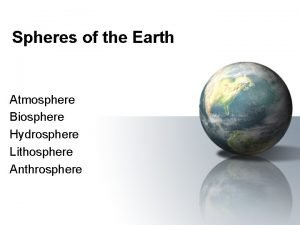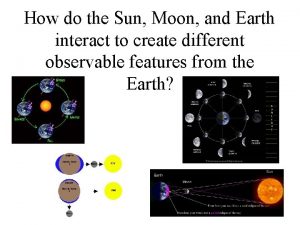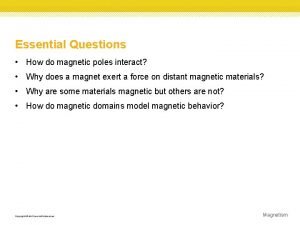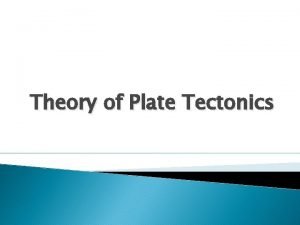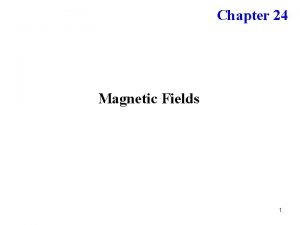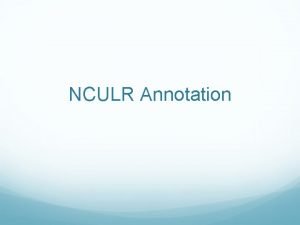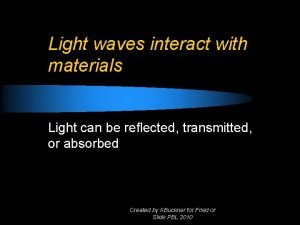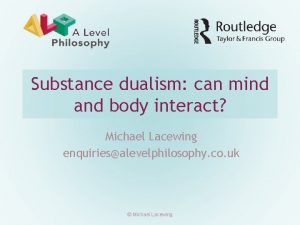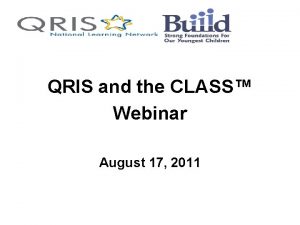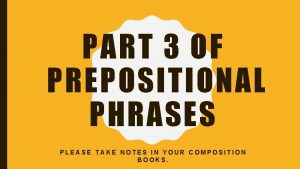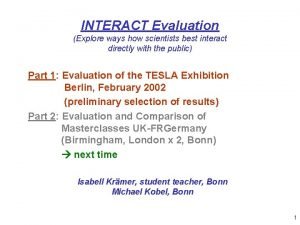T Take Notes I Interact with your notes




























- Slides: 28

T = Take Notes I = Interact with your notes P = Practice with plenty of repetition S = Self-test

CHAPTER 6 SECTION 1: TYPES OF BONDS

ESSENTIAL QUESTIONS • What are the types of bonds? • How does electronegativity affect bonding? • What kind of information can you gain from an atom’s electron configuration?

THREE BOND TYPES • In this section, we will learn how the type of bond is determined by two factors. • One factor is how strongly each atom "attracts" electrons from neighboring atoms (electronegativity). • The second factor is whether the bond is localized to a single pair of atoms (covalent) or acts between many neighboring atoms (metallic and ionic).

BONDING AND ENERGY • Chemical bonds occur because systems tend to rearrange themselves into the configuration with the lowest energy. • In a system of two hydrogen atoms, there are unfilled electron "vacancies" in the first energy level. • Two hydrogen atoms can achieve lower energy by forming a bond. • In the compound H 2, each atom shares both electrons so that each atom can get to the lowest energy state with full energy levels.

ELECTRONEGATIVITY • Electronegativity describes how strongly an atom attracts electrons from another atom. • The trend for electronegativity is that it increases as you move up and to the right on the Periodic Chart.

NON-POLAR COVALENT BONDS • The difference in electronegativity between two bonded atoms predicts whether the bond will be ionic, covalent or somewhere in-between. • A non-polar covalent bond occurs when electrons are equally shared between bonded atoms. Bonds between atoms with an electronegativity difference of 0. 5 or less are non-polar covalent.

POLAR COVALENT BONDS • Elements with an electronegativity difference between 0. 5 and 2. 1 form a polar covalent bond.

INTERACTIVE • See how electronegativity difference affects charge distribution between two bonded atoms in the interactive simulation titled “Electronegativity. ”

POLAR AND NON-POLAR MOLECULES • A polar molecule has a charge separation for the whole molecule - not just an individual bond. • Whether a molecule is polar or non-polar depends on the location and polarity of the individual bonds.

CARBON DIOXIDE • Carbon dioxide has two polar bonds opposite each other in a linear molecule. • Neither end of the molecule has a different charge than the other end so there is no favored orientation and the overall molecule is non-polar.

IONIC BONDS • An ionic bond forms when the difference in electronegativity is larger than 2. 1. • Because they connect multiple atoms, ionic bonds are not represented with lines on structural diagrams. Instead, the + and - signs indicate the charge of each ion.

COMMON CHARGES OF IONS • Most elements can form ionic compounds • The table below shows the most common charges for ions of the main group elements • Left-side elements (metals) form positive ions, right-side elements (non-metals) form negative ions • Elements located between metal and non-metal elements form both positive and negative ions.

ELECTRON CONFIGURATION AND IONS • The charge of an ion depends on how many electrons it must gain or lose to achieve a full energy level.

POLYATOMIC IONS • In many compounds, the "ion" is actually a "charged molecule" consisting of several atoms covalently bonded together. • Polyatomic ions occur when covalently bonded atoms pick up or lose electrons instead of making more bonds with

POLYATOMIC IONS • A polyatomic ion is a molecule with a charge and can be negative or positive. • The chart below lists some common polyatomic ions.

MAKING A POLYATOMIC ION STRUCTURE • The diagram below shows the steps for making the structure of nitrate ion.

PARTIAL CHARGES • Notice the brackets and the minus sign (-) on the Lewis dot diagram that indicate that the structure is an ion with a -1 charge. • The chemistry of polyatomic ions often depends on which of the atoms carries the charge of the ion. In the case of nitrate, we assign a partial charge to the pair of single-bonded oxygen atoms. • Partial charges are symbolized by the lower-case Greek letter delta, δ.

SIMPLE IONIC COMPOUNDS • Ionic substances typically form a crystal. • The crystal is neutral because there are exactly equal numbers of positive and negative charges. • You can have any number of ions in the crystal as long as the positive charges exactly balance the negative charges.

METALS AND METALLIC BONDS • A metal is a substance that is a good conductor of electricity (and heat). • In a metallic bond the valence electrons are shared among all atoms in the entire material. The mobile (detached) electrons are the reason metals are good conductors of electricity.

THE BOND TRIANGLE • The bond triangle shows the relationships between ionic, metallic and covalent bonds. Each corner of the triangle represents one of the three pure types: metallic, covalent, and ionic.

BOND SUMMARY Ionic Bonding between Types of Elements Metal plus Nonmetal Electrons Physical Properties: Melting, Boiling, etc Chemical Properties: Conduct Electricity Soluble in Water Transfer of electrons High Yes (when dissolved or molten/liquid) Covalent Nonmetals only Metallic Metals only Freely moving in a Sharing of electrons sea of electrons Low No Lowest Yes because of free mobile electrons Yes Sometimes No Ions or crystalline Molecules Alloys

POST-ASSESSMENT • What are the types of bonds?

POST-ASSESSMENT • What are the types of bonds? • The three types of bonds are: ionic, covalent, and metallic.

POST-ASSESSMENT • How does electronegativity affect bonding?

POST-ASSESSMENT • How does electronegativity affect bonding? • The greater the electronegativity difference, the more likely the bond is to be ionic. If electronegativity difference is small, the bond will be either polar covalent or nonpolar covalent. Nonpolar covalent bonds have the smallest electronegativity difference.

POST-ASSESSMENT • What kind of information can you gain from an atom’s electron configuration?

POST-ASSESSMENT • What kind of information can you gain from an atom’s electron configuration? • You can predict how many electrons the atom might lose or gain if it were to form an ion; or you can determine whether it is stable, or if it is likely to form a bond in order to increase its stability. You can also predict the properties of the atom or ion it is likely to bond to.
 Take a bus or take a train
Take a bus or take a train Revolution moon
Revolution moon How does biosphere interact with hydrosphere
How does biosphere interact with hydrosphere Why do organisms interact with other organisms
Why do organisms interact with other organisms Coevolution examples
Coevolution examples What season is this
What season is this The four spheres
The four spheres How do magnetic poles interact?
How do magnetic poles interact? Identify which sphere of earth each image represents.
Identify which sphere of earth each image represents. Tectonic plates interact at places called plate
Tectonic plates interact at places called plate Interact club handbook
Interact club handbook Organizing students to interact with content
Organizing students to interact with content How do similar (s-s or n-n) magnetic poles interact?
How do similar (s-s or n-n) magnetic poles interact? St lucy's home raised by wolves characters
St lucy's home raised by wolves characters What is human society
What is human society Sergeant at arms rotary
Sergeant at arms rotary Warm front diagram
Warm front diagram Action elements of dance
Action elements of dance Identify the examples of interactional vandalism.
Identify the examples of interactional vandalism. Interact
Interact Interact
Interact Body interact answers
Body interact answers Teachstone class video library
Teachstone class video library Kesler science sound waves answer key
Kesler science sound waves answer key Interact
Interact Give us your hungry your tired your poor
Give us your hungry your tired your poor To take notes in spanish
To take notes in spanish Sit down and take notes
Sit down and take notes Take prepositional phrase
Take prepositional phrase


